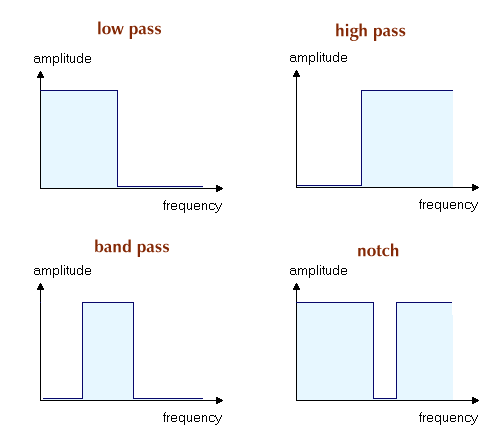 You are working with the text-only light edition of "H.Lohninger: Teach/Me Data Analysis, Springer-Verlag, Berlin-New York-Tokyo, 1999. ISBN 3-540-14743-8". Click here for further information.
You are working with the text-only light edition of "H.Lohninger: Teach/Me Data Analysis, Springer-Verlag, Berlin-New York-Tokyo, 1999. ISBN 3-540-14743-8". Click here for further information.
 You are working with the text-only light edition of "H.Lohninger: Teach/Me Data Analysis, Springer-Verlag, Berlin-New York-Tokyo, 1999. ISBN 3-540-14743-8". Click here for further information. You are working with the text-only light edition of "H.Lohninger: Teach/Me Data Analysis, Springer-Verlag, Berlin-New York-Tokyo, 1999. ISBN 3-540-14743-8". Click here for further information.
|
Table of Contents  Bivariate Data Bivariate Data  Time Series Time Series  Filtering Signals Filtering Signals |
|
| See also: time and frequency, filtering in the frequency domain |   |
Filtering in its most general sense means removing parts of the spectrum of a signal. Depending on the part which is removed from the signal, there are several basic types of filters:

Low-pass filters cut off all high frequency parts of a signal,
lower frequencies can pass the filter. Low-pass filters are closely related
to smoothing procedures, such as moving averages. High-pass filters
cut off the low parts of the spectrum and let the high frequencies pass.
High-pass filters are related to the first derivative of a function. Band-pass
filters are formed by a combination of low-pass and high-pass filters
so that only frequencies within a certain range (band) can pass the filter.
Notch
filters remove a certain band from the frequency spectrum and are also
formed by a combination of low- and high-pass filters. Please note that
the characteristic frequency responses shown above are only theoretical
curves - in reality the filter response functions do not show infinite
steepness at the cutoff frequencies, nor do they exhibit a smooth transfer
characteristic.
Last Update: 2005-Jul-16